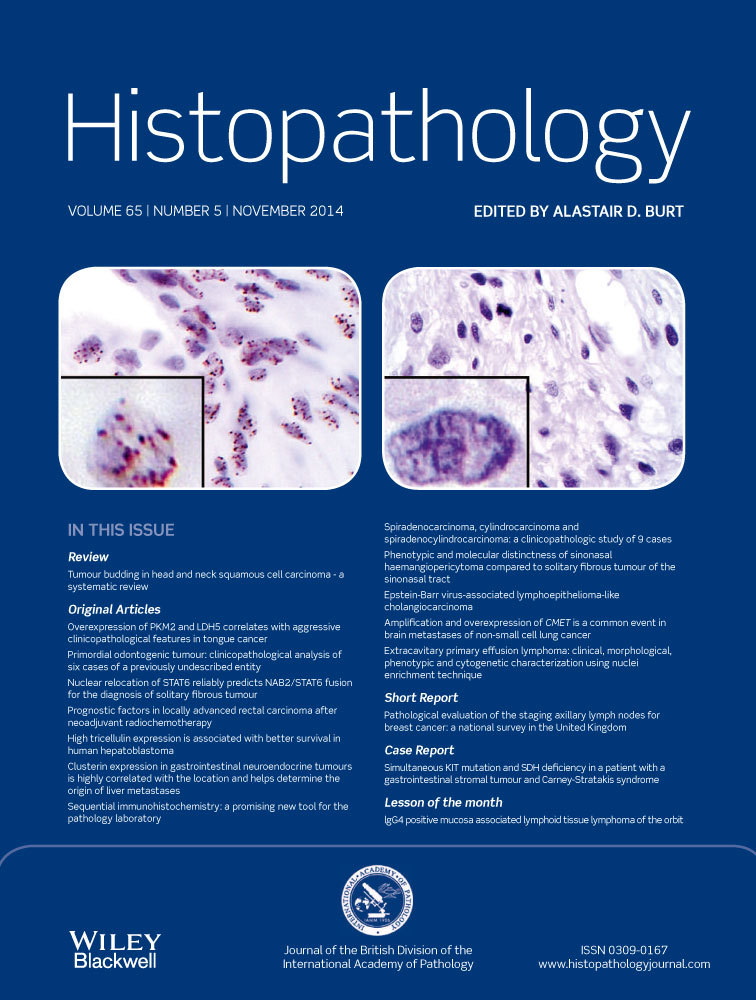Effective maybe, but is it cost-effective? A reply
Joanna Perry-Keene
Aquesta Uropathology, Brisbane, Qld, Australia
Royal Brisbane Hospital, Brisbane, Qld, Australia
Search for more papers by this authorPeter Ferguson
Wellington School of Medicine and Health Sciences, Malaghan Institute of Medical Research, University of Otago, Wellington, New Zealand
Department of Pathology and Molecular Medicine, Wellington School of Medicine and Health Sciences, University of Otago, Wellington, New Zealand
Search for more papers by this authorHemamali Samaratunga
Aquesta Uropathology, Brisbane, Qld, Australia
Search for more papers by this authorJohn N Nacey
Department of Surgery, Wellington School of Medicine and Health Sciences, University of Otago, Wellington, New Zealand
Search for more papers by this authorBrett Delahunt
Department of Pathology and Molecular Medicine, Wellington School of Medicine and Health Sciences, University of Otago, Wellington, New Zealand
Search for more papers by this authorJoanna Perry-Keene
Aquesta Uropathology, Brisbane, Qld, Australia
Royal Brisbane Hospital, Brisbane, Qld, Australia
Search for more papers by this authorPeter Ferguson
Wellington School of Medicine and Health Sciences, Malaghan Institute of Medical Research, University of Otago, Wellington, New Zealand
Department of Pathology and Molecular Medicine, Wellington School of Medicine and Health Sciences, University of Otago, Wellington, New Zealand
Search for more papers by this authorHemamali Samaratunga
Aquesta Uropathology, Brisbane, Qld, Australia
Search for more papers by this authorJohn N Nacey
Department of Surgery, Wellington School of Medicine and Health Sciences, University of Otago, Wellington, New Zealand
Search for more papers by this authorBrett Delahunt
Department of Pathology and Molecular Medicine, Wellington School of Medicine and Health Sciences, University of Otago, Wellington, New Zealand
Search for more papers by this authorReferences
- 1Perry-Keene J, Ferguson P, Samaratunga H, Nacey JN, Delahunt B. Total submission of pelvic lymphadenectomy tissues removed during radical prostatectomy for prostate cancer increases lymph node yield and detection of micrometastasis. Histopathology 2014; 64; 399–404.
- 2Davis GL. Sensitivity of frozen section examination of pelvic lymph nodes for metastatic prostate carcinoma. Cancer 1995; 76; 661–668.
10.1002/1097-0142(19950815)76:4<661::AID-CNCR2820760419>3.0.CO;2-S CAS PubMed Web of Science® Google Scholar
- 3Weingärtner K, Ramaswamy A, Bittinger A, Gerharz EW, Vöge D, Riedmiller H. Anatomical basis for pelvic lymphadenectomy in prostate cancer: results of an autopsy study and implications for the clinic. J. Urol. 1996; 156; 1969–1971.
- 4Boormans JL, Wildhagen MF, Bangma CH, Verhagen PC, van Leenders GJ. Histopathological characteristics of lymph node metastases predict cancer—specific survival in node-positive prostate cancer. BJU Int. 2008; 102; 1589–1593.
- 5Weaver DL. Pathology evaluation of sentinel lymph nodes in breast cancer: protocol recommendations and rationale. Mod. Pathol. 2010; 23(Suppl. 2); S26–S32.
- 6Murphy J, Pocard M, Jass JR, O'Sullivan GC, Lee G, Talbot IC. Number and size of lymph nodes recovered from Dukes B rectal cancer correlation with prognosis and histologic antitumor immune response. Dis. Colon Rectum 2007; 50; 1526–1534.
- 7Greco P, Andreola S, Magro G, Belli F, Gallino GF, Leo E. Potential pathological understaging of pT3 rectal cancers with less than 26 lymph nodes recovered from a prospective study based on a re-sampling of 50 rectal specimens. Virchows Arch. 2006; 449; 647–651.




